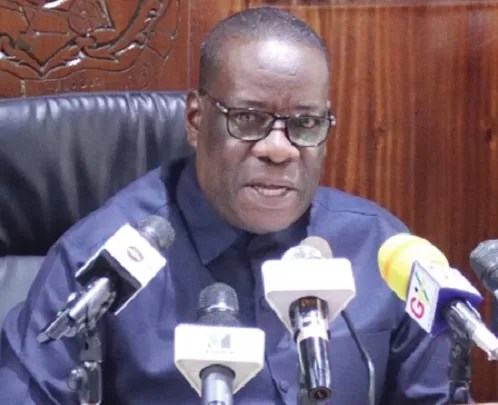West African Examinations Council, WAEC, says the marking of scripts of this year’s Basic Education Certificate Examination (BECE) will commence on Monday, October 9.
The marking of the scripts, which formed part of the second process of the examination, had a challenge with the release of funds.
There has been some apprehension over the delay in the marking of this year’s examination papers but Head of Public Affairs of WAEC, John Kapi said, WAEC held a meeting with the Minister of Education, Dr Yaw Osei Adutwum, last Monday and he gave an assurance that he is going to release some funds to the Council.
He stressed that no one was on strike regarding the marking of the scripts.
However, the government later released 50.5 million cedis to WAEC to conduct the West African Senior School Certificate Examination (WASSCE) and the BECE.
Last Wednesday, WAEC initiated the coordination process which involved bringing the markers together to familiarise themselves with the marking scheme up to today.
“They will finish the coordination on Friday (today) and by Monday, October 9, the actual marking will start,” the Head of Public Affairs of WAEC, John Kapi, told the Daily Graphic yesterday.
He said marking of the scripts, which formed part of the second process of the examination, had a challenge with the release of funds.
“So we have started the process, but what we are saying is that if monies are not released, we may not be able to complete it,” he said.
There has been some apprehension over the delay in the marking of this year’s examination papers but Mr Kapi said WAEC held a meeting with the Minister of Education, Dr Yaw Osei Adutwum, last Monday and he gave an assurance that he was going to release some funds to the council.
He stressed that no one was on strike regarding the marking of the scripts.
Following the government’s indebtedness to WAEC, there were fears that the 2023 BECE for school and private candidates would not be held.
However, the government later released GH¢50.5 million to the WAEC to conduct the West African Senior School Certificate Examination (WASSCE) and the BECE.
Out of the amount, GH¢40 million went into the successful conduct of the WASSCE, representing about 30 per cent of the total amount needed for the conduct of the exam.
The Head of the National Office of WAEC, Wendy Addy-Lamptey, who revealed that, noted that GH¢10.5 million was for the conduct of a successful BECE, constituting almost 15 per cent of what was required for the successful conduct of the examination.
Statistics
A total of 602,457 final-year junior high school (JHS) students across the country took the 2023 BECE, held simultaneously for both school and private candidates, from August 7 to 11, 2023.
The number represented an increase of 49,049 over last year’s figure of 553,408.
Out of the total, 600,714 were School Candidates (BECE-SC), while 1,743 sat the BECE as Private Candidates (BECE-PC).
The BECE-SC were made up of 300,323 males and 300,391 females, while the BECE-PC involved 889 males and 854 females.
Regional breakdown
For the BECE-SC, Ashanti Region had the highest number of 117,084 candidates, made up of 57,973 males and 59,111 females.
It was followed by the Greater Accra Region with 112,894 candidates — 54,624 males and 58,270 females.
The Central Region had 68,035 candidates — 34,166 males and 33,869 females — with Western and Western North regions presenting 60,528 candidates (30,825 males and 29,703 females).
About 58,311 candidates, made up of 29,703 males and 28,608 females, sat the examination in the Eastern Region, while 55,617 candidates (27,882 males and 27,735 females) took part in the examination in the Ahafo, Bono and Bono East regions.
The Northern, North East and Savannah regions were to present a total of 46,783 candidates — 24,706 males and 22,077 females.
The Volta and Oti regions also had 44,221 candidates (22,723 males and 21,498 females), while Upper East Region featured 22,437 candidates (10,558 males and 11,879 females), with the Upper West Region recording 14,804 candidates (7,163 males and 7,641 females).
SOURCE: GRAPHIC














